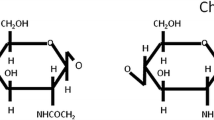Abstract:
The search for new molecules in fish protein hydrolysates is of great interest in animal feeding as it is in aquaculture, fertilizer, cosmetic, and pharmacologic domains. Different sources of hydrolysates such as shrimp waste (Pandalus borealis), cod (Gadus morhua) head, and head and viscera of sardine (Sardina pilchardus), obtained after hydrolysis or autolysis, were tested on fibroblast cell cultures and by gastrin radioimmunoassay. The level of hydrolysis seems to play an important role in the presence of biological peptides. Elution profile on a gel filtration Sephadex G-50 column was used to estimate the degree of hydrolysis of the fractions studied. Growth-factor-like activities were found in less-hydrolyzed fractions. Conversely, the most-hydrolyzed fractions showed gastrin and cholecystokinin immunoreactivity.
Similar content being viewed by others
Author information
Authors and Affiliations
Additional information
Received January 22, 1999; accepted April 13, 1999
Rights and permissions
About this article
Cite this article
Cancre, I., Ravallec, R., Van Wormhoudt, A. et al. Secretagogues and Growth Factors in Fish and Crustacean Protein Hydrolysates. Mar. Biotechnol. 1, 489–494 (1999). https://doi.org/10.1007/PL00011805
Issue Date:
DOI: https://doi.org/10.1007/PL00011805




